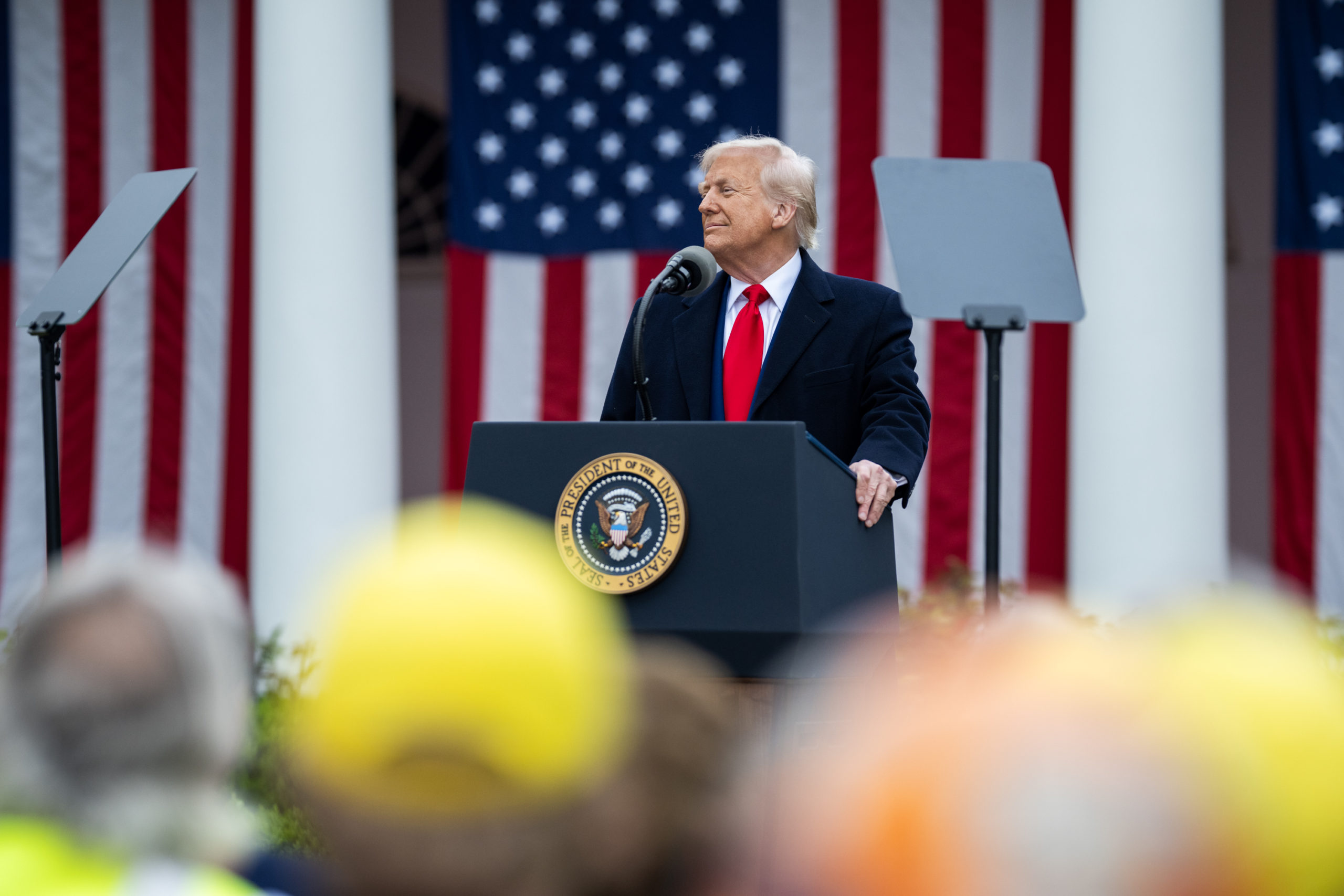
Stop Making Sense: Prepare For Chaos

In
- EU and strategic partners,
- EU economic affairs,
- EU strategy and foreign policy,
- Europe in the World,
On April 2, 2025, President Donald Trump stood in the White House Rose Garden and declared a “Liberation Day” for American industry. Announcing sweeping new tariffs, he claimed the United States was breaking free from foreign dependency.
*****
Stop Making Sense: Prepare For Chaos
On April 2, 2025, President Donald Trump stood in the White House Rose Garden and declared a “Liberation Day” for American industry. Announcing sweeping new tariffs, he claimed the United States was breaking free from foreign dependency. “This is the day America’s destiny was reclaimed,” he said, as markets braced for impact—quite literally, since the announcement was delayed until after market close to prevent immediate turmoil.
The measures, which Trump lauded as “historic,” impose a baseline 10% tariff on all goods from all trading partners going into effect on April 5, alongside further tariffs for around 60 countries and trading blocs that will replace the baseline tariffs on April 9. Under this regime, European imports into the US will be exposed to a 20% tariff (barring exemptions). These aren’t strategic tariffs aimed at specific industries or adversaries, but blunt measures. Although the White House has been opaque about its methodology for setting these so-called ‘reciprocal tariffs’, they have apparently been using an ad hoc formula: dividing a country’s trade deficit with the U.S. by U.S. imports from that country—as arbitrary as it is aggressive. It’s crude, punitive, and legally justified via a national emergency declaration under the International Emergency Economic Powers Act (IEEPA).
Yet there is no real national emergency here—only Trump’s singular obsession: the US trade deficit. Not subsidies, not currency manipulation, not industrial espionage or technology transfers—just the trade deficit. The tariffs aren’t ontological—about national security or identity—but epistemological: about how Trump sees and understands trade. And what he sees is only red ink on a ledger.
Under Trump 1.0, the U.S. pursued a targeted trade war against China, using tariffs as leverage to push supply chains away from a systemic rival. There was at least a thread of strategic thinking. Trump 2.0 is different. This is not a war on China—it’s a war on global trade itself. Bangladesh, hit with a 37% tariff, doesn’t run a surplus with the U.S. because of protectionism, but because it’s too poor to buy high-end American goods, while its textiles are staples for U.S. consumers. Punishing such a country makes no economic sense and reflects no broader plan—only a devotion to numbers divorced from context.
This isn’t policymaking—it’s improvisation masquerading as doctrine. Allies and adversaries alike are swept into the same category: trading partners to be penalized. Trump’s tariffs will trigger countermeasures, erode trust, and fracture trade flows that have taken decades to build.
In a shameful Bloomberg interview, U.S. Treasury Secretary Scott Bessent—seemingly unaware of both the intent and consequences of the tariffs—urged countries not to retaliate, as if hoping the storm might simply pass. But his boss has escalated, and the world will respond.
Over the past few months, several commentators—myself included—have speculated that the Trump administration’s actions might be part of a larger strategy to strike a grand bargain with China. This notion, often referred to as the “Mar-a-Lago Accord” (a nod to the 1985 Plaza Accord), gained traction following a paper by Stephen Miran in November 2024, which laid out the contours of such a geoeconomic realignment. The idea was that Trump’s tariffs and aggressive posturing were bargaining chips, aimed at forcing China into a new framework on trade and capital flows. But any illusion of strategy appears to be fading. Miran himself—now Chair of the Council of Economic Advisors—recently dismissed his own theory as little more than “a catalogue of available options” —a far cry from a coherent doctrine.
Trump has declared a national emergency not because of a threat but because of a fixation—lacking any strategic framework. By prioritizing the trade deficit above all else, he reveals a worldview trapped in simplistic, zero-sum logic: trade deficit bad. In doing so, he discards strategic nuance for brute force. Rehearsing a naïve melody, Trump may call it “Liberation Day”—but for the rest of the world, the tune is unmistakable: stop making sense, and start preparing for chaos.
Disclaimer: Any resemblance to the discography, aesthetic, or existential energy of a certain 1980s post-punk band is purely coincidental. This is not my beautiful analysis. This is not my beautiful trade policy.
(Photo credit: Wikimedia Commons)